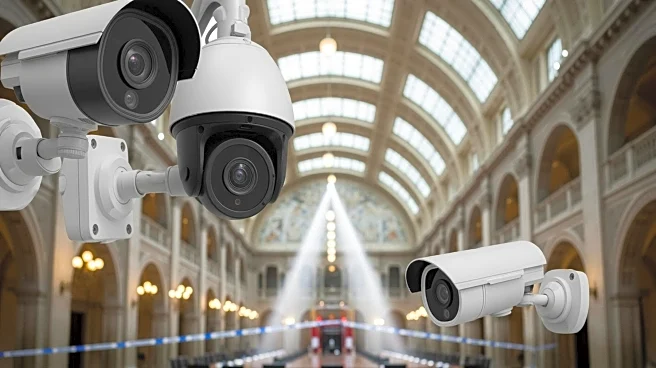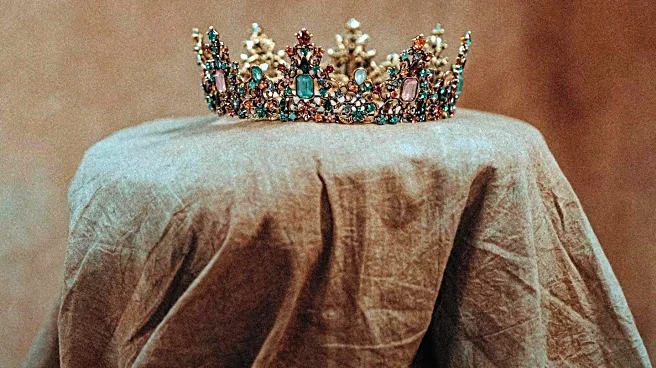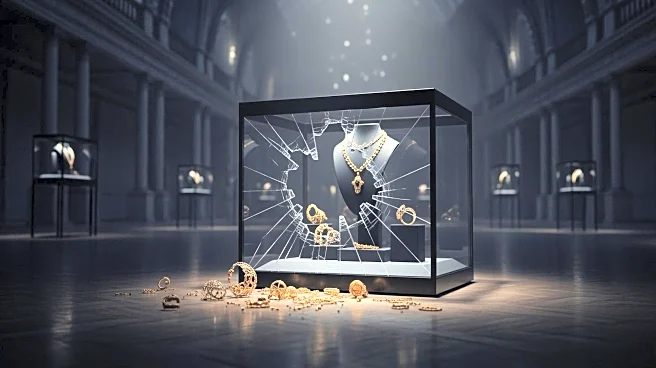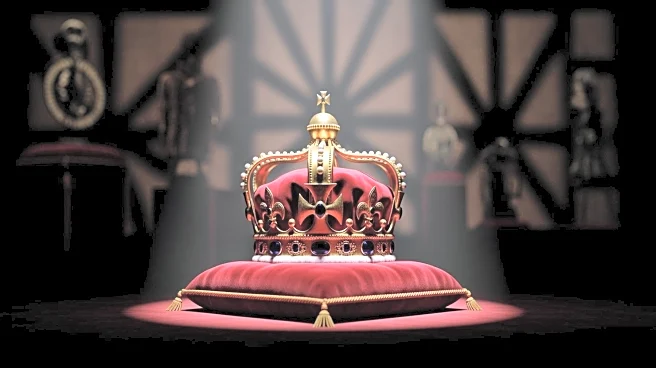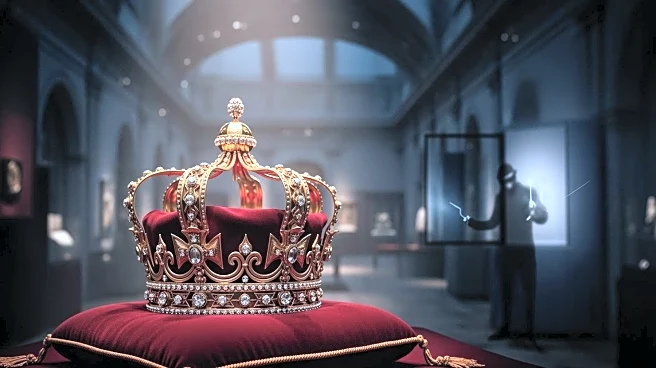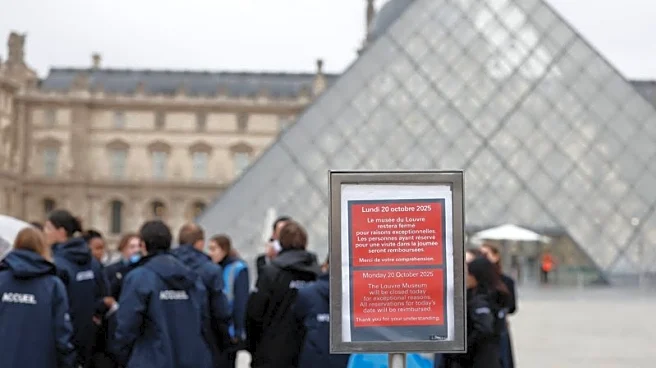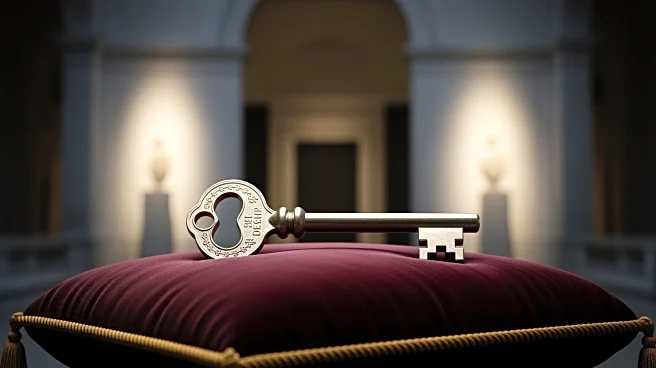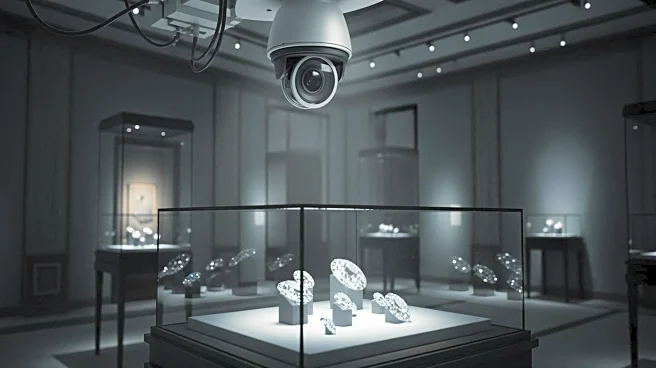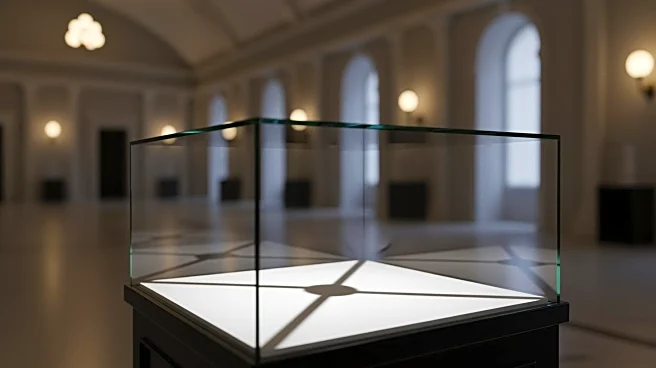What's Happening?
The Louvre Museum in Paris remains closed following a daring daylight heist where thieves stole eight pieces of historic jewelry, including items from the French crown jewels. The robbery occurred shortly
after the museum opened, with the thieves using a truck-mounted ladder to access the Apollo Gallery. They targeted two high-security display cases, taking items such as a tiara and necklace worn by Queen Marie-Amélie and Queen Hortense. The entire operation lasted seven minutes, and eight of the nine stolen items remain unaccounted for. French officials have acknowledged security failures and are reviewing security measures across cultural institutions in France.
Why It's Important?
The theft has raised significant concerns about the security of cultural institutions in France, highlighting vulnerabilities in protecting national heritage. The stolen items are of immense historical value, representing a loss not only to the museum but to French cultural heritage. The incident has prompted a national security review, with potential implications for how museums and cultural sites are secured in the future. The heist also poses challenges for international art recovery efforts, as experts suggest the stolen items may already be abroad, complicating recovery efforts.
What's Next?
French authorities are conducting a thorough investigation to recover the stolen items and prevent future incidents. The Culture and Interior Ministers have agreed to strengthen security measures at cultural institutions nationwide. The investigation is being handled by a specialist police unit known for solving high-profile robberies. The Louvre's closure is temporary, but the incident may lead to long-term changes in museum security protocols.
Beyond the Headlines
The heist has sparked a debate about the adequacy of security measures at major cultural sites, with critics pointing to the ease with which the thieves executed the robbery. The incident underscores the need for balancing public access to cultural heritage with the security of valuable artifacts. It also raises ethical questions about the role of organized crime in art theft and the challenges of recovering stolen cultural property.
